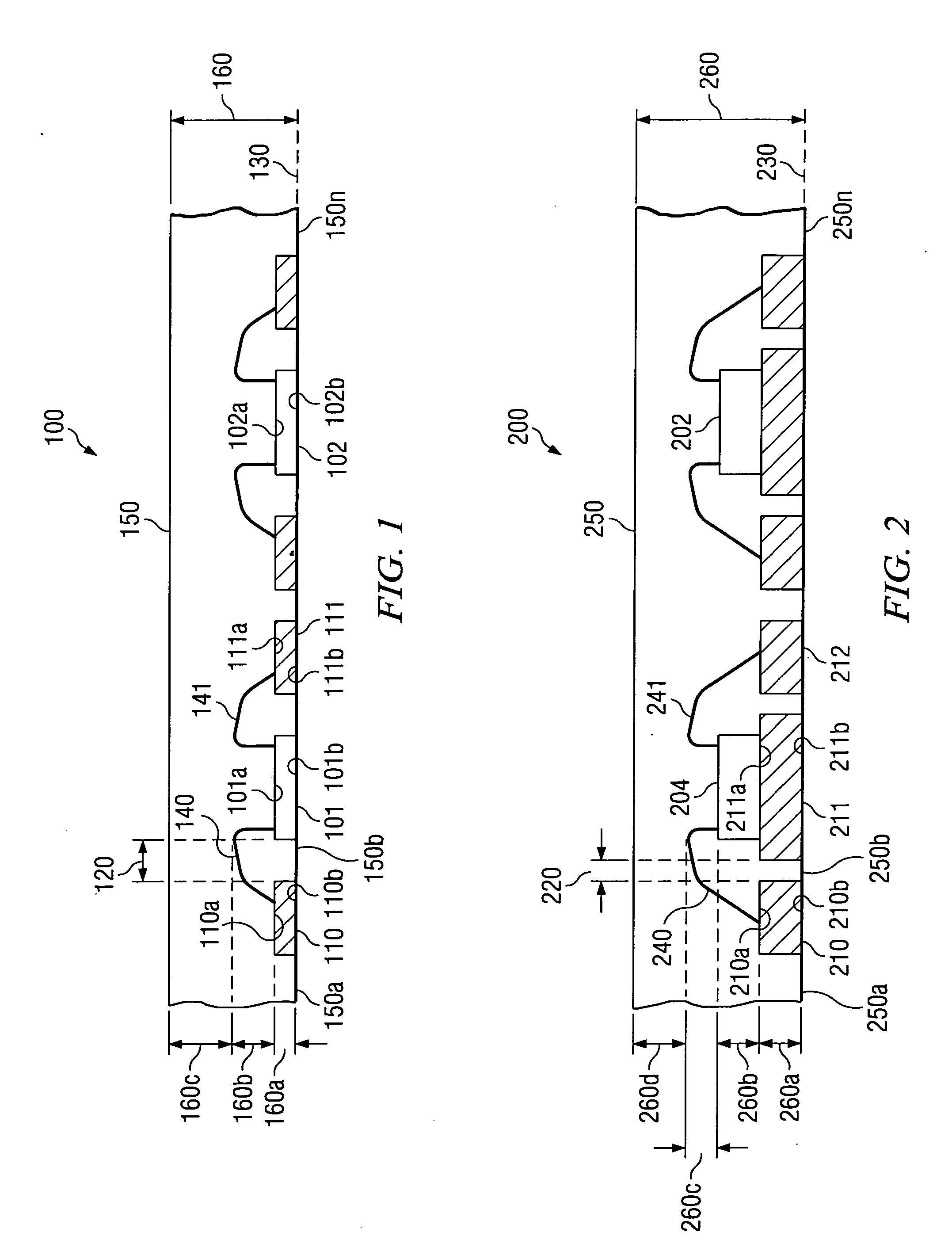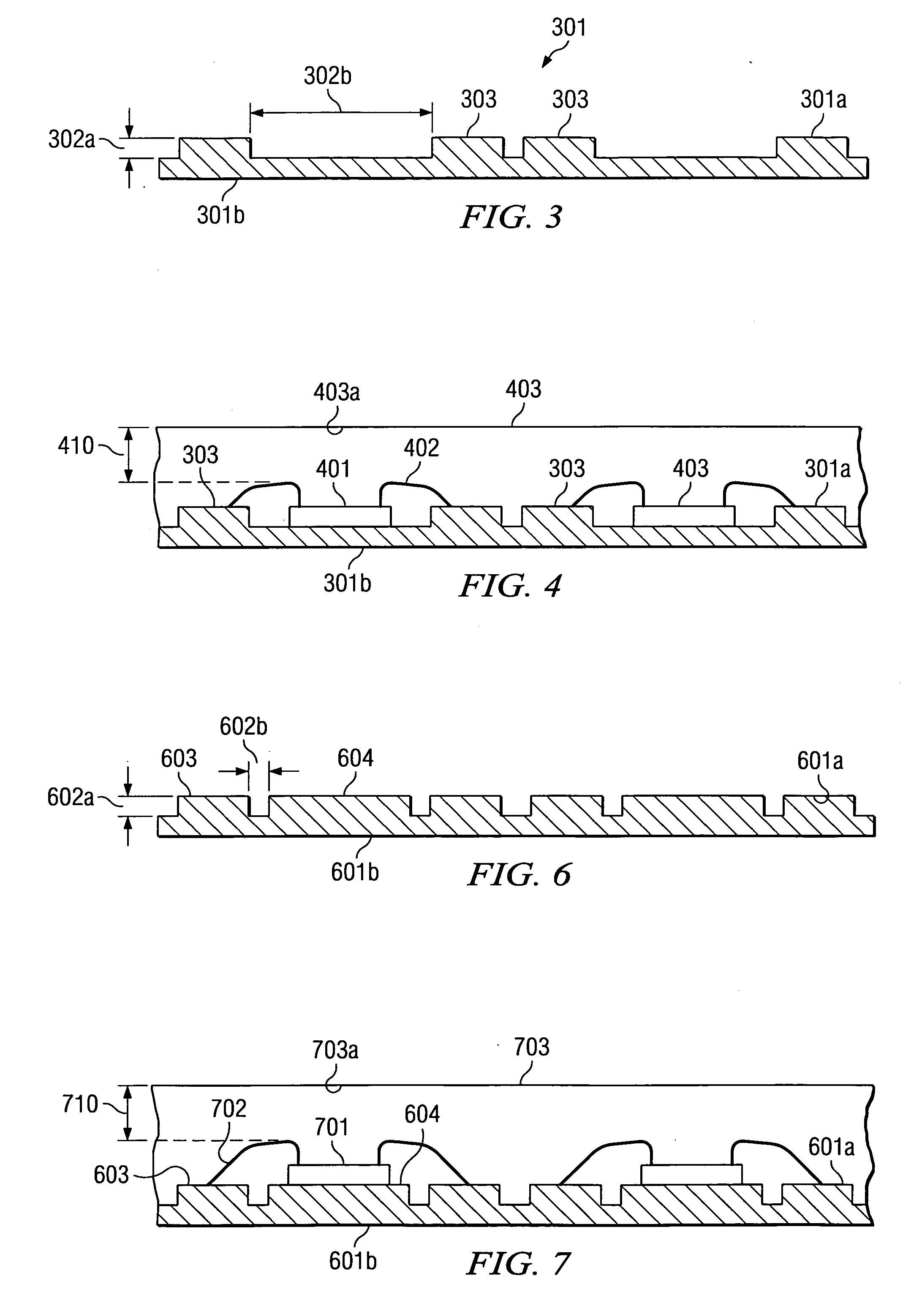Structure and method for thin single or multichip semiconductor QFN packages
a technology of semiconductor qfn and structure, applied in semiconductor devices, semiconductor/solid-state device details, electrical devices, etc., can solve the problems of increasing the difficulty of increasing the difficulty of finding satisfactory solutions for diverse requirements, and increasing the difficulty of maintaining mold compound adhesion to the leadframe, etc., to achieve the effect of easy control
- Summary
- Abstract
- Description
- Claims
- Application Information
AI Technical Summary
Benefits of technology
Problems solved by technology
Method used
Image
Examples
Embodiment Construction
[0028]FIGS. 1 and 2 are schematic cross sections of embodiments of the present invention. FIG. 1 shows a multichip device of the QFN (Quad Flat No-lead) or SON (Small Outline No-lead) family, generally designated 100, with two similar chips 101 and 102. It should be stressed, however, that the considerations about device 100 are equally valid, when device 100 contains only a single chip, or more than two chips; also, the considerations are equally valid, when the chips of a multichip device are dissimilar or belonging to different product families.
[0029] Using chip 101 as an example, FIG. 1 illustrates chip 101 having an active surface 101a and a passive surface 101b. The active surface 101a includes contact pads suitable for affixing conductive connectors. In analogy, chip 102 has an active surface 102a with contact pads, and a passive surface 102b.
[0030] Device 100 in FIG. 1 further has a plurality of metal segments 110, 111, etc., which are separated from chips 101 and 102 by g...
PUM
 Login to View More
Login to View More Abstract
Description
Claims
Application Information
 Login to View More
Login to View More - R&D
- Intellectual Property
- Life Sciences
- Materials
- Tech Scout
- Unparalleled Data Quality
- Higher Quality Content
- 60% Fewer Hallucinations
Browse by: Latest US Patents, China's latest patents, Technical Efficacy Thesaurus, Application Domain, Technology Topic, Popular Technical Reports.
© 2025 PatSnap. All rights reserved.Legal|Privacy policy|Modern Slavery Act Transparency Statement|Sitemap|About US| Contact US: help@patsnap.com



